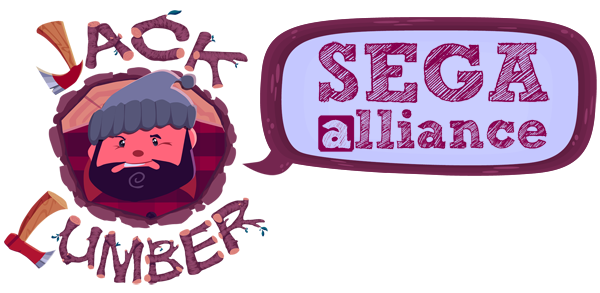By Meelad Sadat
Player acquisition costs are skyrocketing for mobile games, putting developers in a pinch even as the category is seeing healthy growth. ComScore says 77.5 million people are playing these games in the US alone. Tokyo-based financial firm Ichiyoshi Securities forecasts the global mobile game market will be worth $17.6 billion by 2015. For an upstart or indie developer struggling to get their mobile game noticed, these kinds of numbers can mean little.
As mobile gaming’s popularity grows, so do the number of companies throwing everything they can at people who play them. App review site 148Apps recently reported that every day Apple gets about 128 new game app submissions. Imagine if iOS and Android app stores were brick and mortar retail. Every day there would be a new aisle to walk through, with little rhyme or reason to what’s there once you’re past the front of the store.
Mobile Gaming USA is going to tackle the issues behind app store clutter and how developers are dealing with discoverability at their upcoming conference in New York, where they’re gathering more than 50 speakers. Video Games Intelligence, the folks behind the conference, recently put out a white paper where some of those speaking from the developer and publisher side of the business share their thoughts on the topic.
“To acquire users, it’s over ten times what it used to be four years ago,” says Alex Schwartz, founder and CEO of Owlchemy Labs. “The huge publishers have come in with budgets that are far over the industry standard of a $100,000 per game, and just dropping loads of money, especially with the free-to-play games. That’s something that makes it very difficult for independent developers to rise above and, really, innovation and creativity are the only tools we can use to combat that.”
 Owlchemy partnered with SEGA on “Jack Lumber”
Owlchemy partnered with SEGA on “Jack Lumber”
Sega’s Ethan Einhorn agrees but also thinks developers don’t necessarily need to combat it. His take is that if you don’t think you can beat the big publishers, think about joining them.
“Trying to find success by publishing on your own is not impossible, but it’s really tough,” says Einhorn, who serves as Sega creative director and oversees developer relations. “Hundreds of amazing games get lost every year as a result of the smartphone market’s high-churn, low-visibility hurdles. Sega believes that independent developers benefit from working with established publishers.”
Sega is offering indie developers deals that can drive them eyeballs with their mobile network, where they cross-sell games based on genre with a service called Sega Alliance, and through marketing to their social media communities.
Nathan Camarillo, studio head at Freeverse, takes the development first point of view.
“The first thing is you absolutely have to make a superior product. The more attractive your product, the more likely people are to find it, get drawn into it and recommend it to others,” he says.
But he thinks that even with a good game, it’s getting more and more tough to get noticed.
“The problem is, it’s a finite resource,” says Camarillo. “We’re all bidding and competing for the same customers.”
 Don’t click on this
Don’t click on this
That’s exactly what is driving up rates for acquisition campaigns, especially those based on cost-per-install. Some developers are spotting trends within how those costs fluctuate, and formulating tactics for maxing out returns on what they spend.
“We’ve found cost of acquisition to be seasonal,” says GSN executive director Nick Bogovich. “By that, I mean that around the holidays it’s more expensive to acquire a user, than in the early spring or summer. As we move into fall, we’re seeing acquisition costs rise, which is in line with what the rest of the industry is seeing. So, one tip would be to play into that seasonality and acquire customers when it’s most cost effective.”
Camarillo says Freeverse looks to cross-promoting to the users they get. “We try to drive a platform effect. That means when we buy a customer once, we move them to other products that we also make. We can get repeat business from the same customer and provide them with a constant flow of entertainment that we’re crafting for them.”
Camarillo adds that developers who don’t have a portfolio yet should look to partner with others. He says game players are starting to see the value of getting cross-promoted titles relevant to their tastes and based on what they’re playing, considering how difficult it is to find the quality games that are out.
Owlchemy’s Schwartz agrees, “It’s a great way to get users, because people care about iPhone games when they are on their iPhones. When you get on the front-page of IGN or [Joystiq], you only get a couple of hundred downloads, because it doesn’t necessarily lead to click-through. We find that on-device advertising is the most important.”
But Blogovich points out how any efforts to advertise to mobile gamers need to take the experience into account.
“The tricky thing with advertising is making the content relevant,” he says. “Rather than interrupt the user experience clumsily, I’d like to see us partnering with advertisers in such a way that the ad content is valued by both our advertisers and our users. That might mean going the route of sponsored content, where ads are more integrated into the user experience, or it might mean taking a harder look at the rewards-based solutions in the market.”
The iPhone turned mobile games from a category where publishers ported catalogue titles and puzzle games into a viable gaming platform. While Android is making strides, Apple’s iOS platform continues to be the dominant one for apps, meaning it’s still where nearly every developer looks first for profit. For them, the fruit of their labor can come down to what Apple does with their apps once they’re in the App Store.

“We do our best to maintain a great relationship with Apple,” says Schwartz. “We have a direct contact, because we’ve made a series of great games that they’ve contacted us about. Without that, it would be extremely hard to get anywhere.”
Blogovich believes it goes beyond that. The holy grail is getting an app in front of the right people at Apple to get considered for one of their top lists. It’s where people shop for apps. Yet the process for getting products on those lists is notoriously opaque.
“If you are tapped on the shoulder by Apple and they decide to place your app on the home page of the App Store, that’s huge,” says Blogovich. “That said, there is no set formula to getting that preferred placement, especially if you’re an indie developer.”
Mystery or not, Schwartz sums up what that can mean for an indie developer.
“When Apple shines upon us, it’s a good thing.”
Mobile Gaming USA East takes place January 30-31 in New York City. The full white paper previewing the conference and registration information are available on their site. For the white paper, look for the ‘Download Report’ button on the right side of the page.

